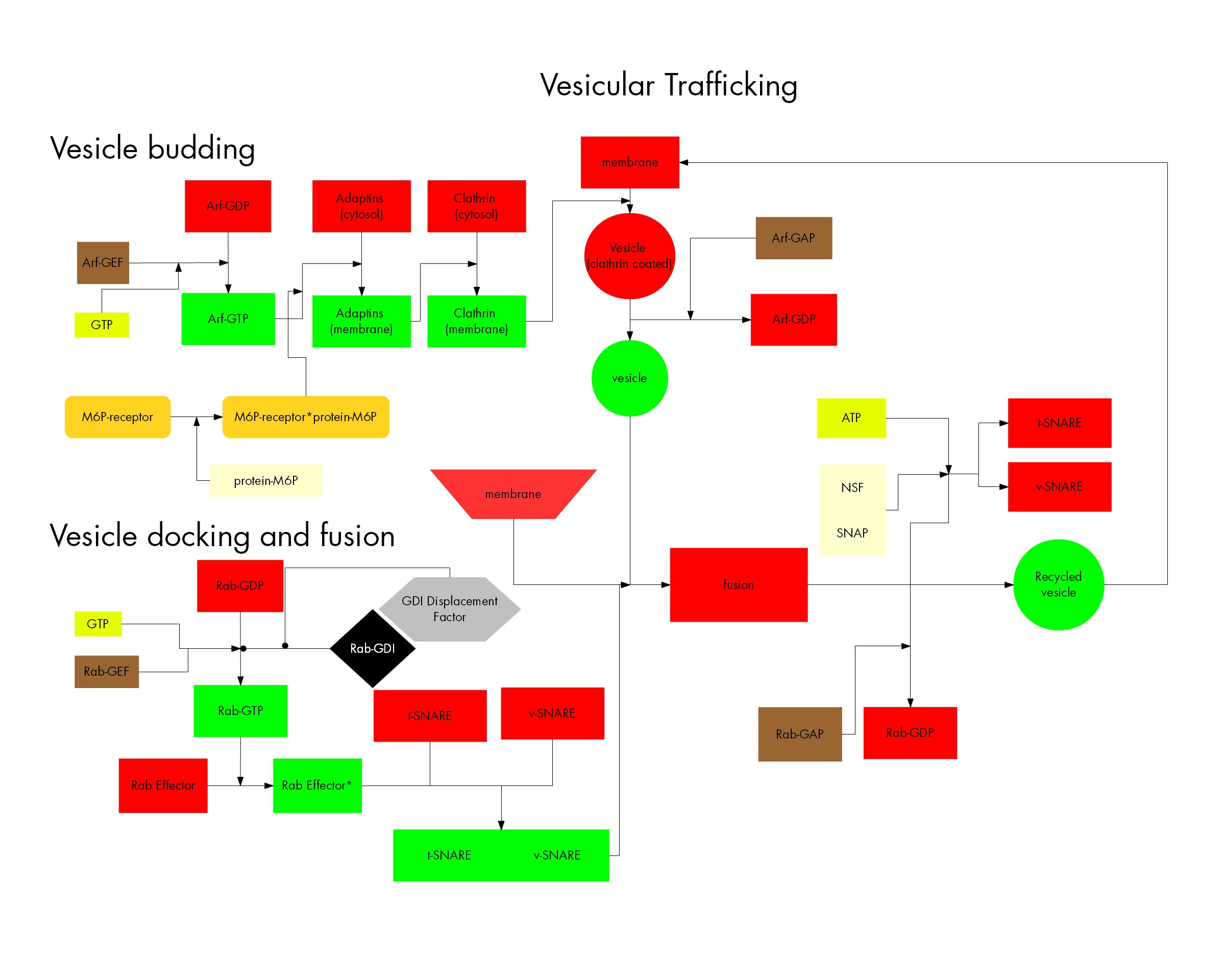Had a couple minutes to spare before leaving lab, so decided to throw together some diagrams to help explain a couple biological pathways students of bio42, a bio class at Stanford I'm TAing. Hoping to make a set for each system we study. Started with vesicle budding and fusion along with muscle contraction in smooth and skeletal muscles.
Had a couple minutes to spare before leaving lab, so decided to throw together some diagrams to help explain a couple biological pathways students of bio42, a bio class at Stanford I'm TAing. Hoping to make a set for each system we study. Started with vesicle budding and fusion along with muscle contraction in smooth and skeletal muscles. The similar style, layout, and coloring is an attempt to demonstrate the similarity in pathways for students and allow them to get the basic components down. Many parts of biology boil down to understanding the basic framework of proteins being turned on or off then doing the same to some other protein, enzyme, metabolite, what-have-you downstream.
There was a little difficulty in diagramming with a flow chart certain dynamic processes such as vesicle and target membrane fusion or the interaction of SNAREs along with their detachment by NSF and SNAP, but I think it captures the essential elements. In the future, I'll probably clean-up the style of the lines and choose a softer color scheme to make the diagram more inviting. Also, should probably just show more things that are in complex as being grouped together, but that might clutter the diagrams unnecessarily.
Muscle contraction was a little easier, but I greatly simplified the actual contraction step. Might make a separate diagram that details the coupling of ATP hydrolysis to myosin head movement. Regardless, looking forward to building out from here and adding protein trafficking, nuclear import and export, cell cycle, EGFR to MAPK signal transduction cascade and many more. Should be fun!
 stanford
stanford linkden
linkden github
github goodreads
goodreads medium
medium twitter
twitter

